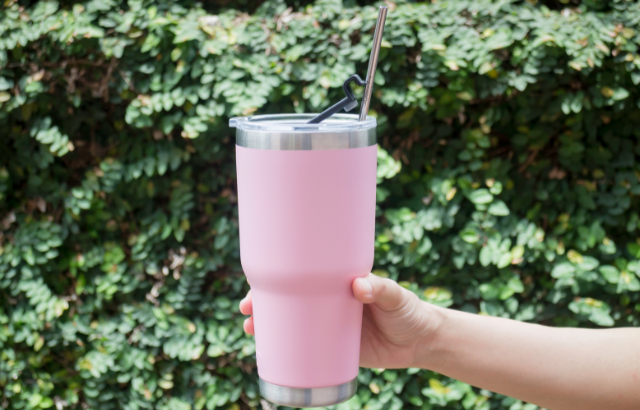The recent hoopla about the Stanley water bottle has garnered some serious free advertising for the company. While the 100-year-old company has been a standard drinkware supplier, some concern has recently surfaced about lead exposure from the popular new bottle.
In brief: the company uses lead solder to vacuum-seal the bottles’ double walls. Sometimes the plug covering the seal falls out, potentially exposing the user to toxic lead. Stanley has a lifetime guarantee, so suggests you return the bottle if this happens.
While there are other companies, such as Yeti and Lifestraw, that use lead as a sealant, many companies, such as Klean Kanteen, Hydro Flask, and Owala, have chosen to use less hazardous, though more expensive, materials.
After scrutinizing the Quencher on the Stanley website, I was disappointed in the plastic top being referred to as “BPA-Free.” As a long-time student of marketing scams and devices, I have learned not to be distracted by what a company says it doesn’t have; I want to know what the product is actually made from. I experienced the frustration of obscure product information a lot 15 years ago when I was in business running a green goods store.
In this case, I had to do a deep Google search to learn that their top is made from polypropylene, plastic #5. Polypropylene is a common food-grade plastic that has been shown to leach chemicals of concern and/or EDCs (endocrine-disrupting chemicals), in addition to shedding microplastics.
The composition of the straw, however, remains a mystery. I even contacted the company directly to find out what the straw was made from. The first response was, “The base material is plastic …”. (I knew that!) I then asked exactly what plastic it was, and their last response was, “At this point, we don’t have the information.”
Overall, I am not impressed with the Stanley model and don’t recommend it. I ding them for their plastic top and straw, but most of all for lack of transparency. Complete product descriptions should be easy to find. I am a bit shocked that such a well-known drinkware brand remains ambiguous during a time when consumers are aware of potential chemical exposures from packaging.
Looking at the relative health and environmental virtues of different water bottles, you can see that some of them – current fads aside – really are better than others.
When it comes to water bottles, consumers generally have a choice between glass, aluminum, plastic, and stainless steel.
Glass is probably the safest and “cleanest,” but it also tends to be heavier, and can break.
Aluminum is always lined with a plastic of some sort – so try to avoid aluminum bottles.
Plastic is, well, plastic. Almost all plastics have been shown to leach endocrine-disrupting chemicals (EDCs), so you really never know what you are exposed to when you use them. In addition, you are guaranteed to swallow a boatload of microplastics with each refill. Terrible image, I know, but true!
This brings us to my favorite, stainless steel. Environmentally, stainless steel comes with a high recycled content, typically 90 percent, which means a reduced carbon footprint. Occasionally consumers voice concern about the leaching of nickel or chromium from stainless steel. While this is potentially true, the amounts are exceptionally small, smaller than what can be found in foods. In addition, these are both micronutrients that are necessary for human survival. Remember that in most cases, the dose makes the poison.
If you are someone who seeks to avoid all plastics in their water bottles, Kleen Kanteen and a few other companies (such as Triple Tree, Bambaw, and Blockhuette) have created bottles fabricated entirely from stainless steel. Other companies that make stainless steel water bottles use plastic for the top and/or the straw, as in the Stanley Quencher model.
You can replace plastic straws with either silicone or stainless steel straws. Stainless is preferred as silicone is not totally benign. Note that all other types of straws – plastic, bamboo, paper, and glass – have been found to be contaminated with toxic PFAS chemicals.
My advice is to stick with brands, such as Kleen Kanteen, that are transparent in their manufacturing materials, and that are clearly trying to do the right thing when it comes to human health and the environment.
Learn More: How To Create a Healthy, Nontoxic Home with Free Resources from the Anticancer Lifestyle Program
Sources



 Deborah deMoulpied
Deborah deMoulpied 

